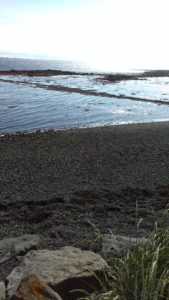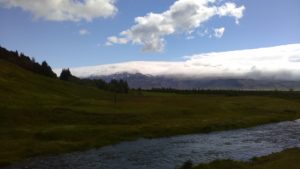 Remember the doomed man thrown by his horse and crying: ‘Beautiful is the hillside, I will not go.’; The old woman confessing: ‘He that I loved the Best, to him I was worst.’
Remember the doomed man thrown by his horse and crying: ‘Beautiful is the hillside, I will not go.’; The old woman confessing: ‘He that I loved the Best, to him I was worst.’
Islands are places apart where Europe is absent. Are they? The world still is, the present, the lie, And the arrow bridge over a torrent Or the small farm under a crag.
– W.H. Auden (1937)
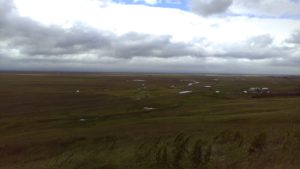 These verses by W.H. Auden reflect the reverberation of Iceland’s medieval literature into modern literary consciousness. The “doomed man” is Gunnar, a character in Njáls Saga, who is sentenced to outlawry and told to leave Iceland or else risk being killed. He is on his way fro his homestead when his horse trips and he looks back on his land, deciding that he cannot leave after all. This decision to stay inevitably results in his death. The “old woman” from the verses is Gudrun, heroine of Laxdæla Saga, who marries four times over the course of her life. Near the end of her life her son asks her which man she loved most, and she gives no name but answers with the cryptic lines quoted above. Students of Old Norse literature have been debating whom she loved most ever since! In fact, at a Old Norse dinner series at Notre Dame last semester, colleagues and I debated this very question!
These verses by W.H. Auden reflect the reverberation of Iceland’s medieval literature into modern literary consciousness. The “doomed man” is Gunnar, a character in Njáls Saga, who is sentenced to outlawry and told to leave Iceland or else risk being killed. He is on his way fro his homestead when his horse trips and he looks back on his land, deciding that he cannot leave after all. This decision to stay inevitably results in his death. The “old woman” from the verses is Gudrun, heroine of Laxdæla Saga, who marries four times over the course of her life. Near the end of her life her son asks her which man she loved most, and she gives no name but answers with the cryptic lines quoted above. Students of Old Norse literature have been debating whom she loved most ever since! In fact, at a Old Norse dinner series at Notre Dame last semester, colleagues and I debated this very question!
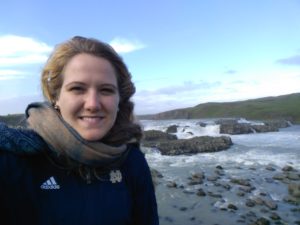
In the years 1871-1873, the 19th century artist and writer Willam Morris visited Iceland and kept a journal of his travels. He had read Njáls Saga, and described some of the places he saw with references to the saga. He remarks on the entry for July 13, 1871: “we cannot see now for the mist, but the rain leaves off now and the clouds life, and there is a wonderful fiery and green sunset, so stormy-looking! over Eyjafell, the great ice-topped mountain which is at the eastern end of the Njala country.” This “Eyjafell” is none other than the infamous Eyjafjallajökull which erupted in 2010.
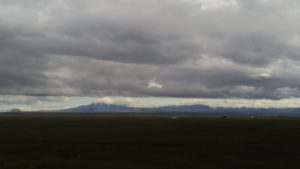
I fell in love with Old Icelandic literature because of the sagas; I am drawn to literature that is both beautiful and melancholy (perhaps all truly good literature is both), and I found in the Íslendingasögur much beauty, but of a distinctly dark character. Our discussions in the Icelandic summer course about the works of Halldór Laxness (a Nobel Prize in Literature recipient) so intrigued me that I purchased Sjálfstætt Folk (Independent People) first in Icelandic, and when that proved too ambitious, in English. I have just finished reading it, and I am excited to read more of the works of Laxness and other modern Icelandic writers in the future. I found in Sjálfstætt Folk an echo of the cold resolve and submission to fate which so resounds in the medieval sagas. If there is an essential spirit of Icelandic literature, it has perhaps persisted from the medieval period to the present. It is clear why many have viewed the saga tradition as an influence on Laxness’s work.
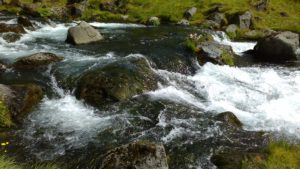 As I am beginning to wrap up my time in Iceland, I’m thinking about how I will continue to study Modern Icelandic when I return to the States. I’m really happy with the progress I’ve made whilst here, and I don’t want to lose momentum. I hope to come back in the not-too-distant future to continue my language study. In the meantime, I’m developing a strategy to keep me from forgetting what I have learned. While it would be quite challenging to find speakers of Icelandic nearby, I am planning on continue my language study by:
As I am beginning to wrap up my time in Iceland, I’m thinking about how I will continue to study Modern Icelandic when I return to the States. I’m really happy with the progress I’ve made whilst here, and I don’t want to lose momentum. I hope to come back in the not-too-distant future to continue my language study. In the meantime, I’m developing a strategy to keep me from forgetting what I have learned. While it would be quite challenging to find speakers of Icelandic nearby, I am planning on continue my language study by:
- Corresponding in Icelandic with friends I made in the program
- Slowly but surely reading Sjálfstætt Folk in Modern Icelandic
- Watching a Modern Icelandic film (in Icelandic) every other week.
- Reading Modern Icelandic aloud to practice making some of the more difficult sounds
